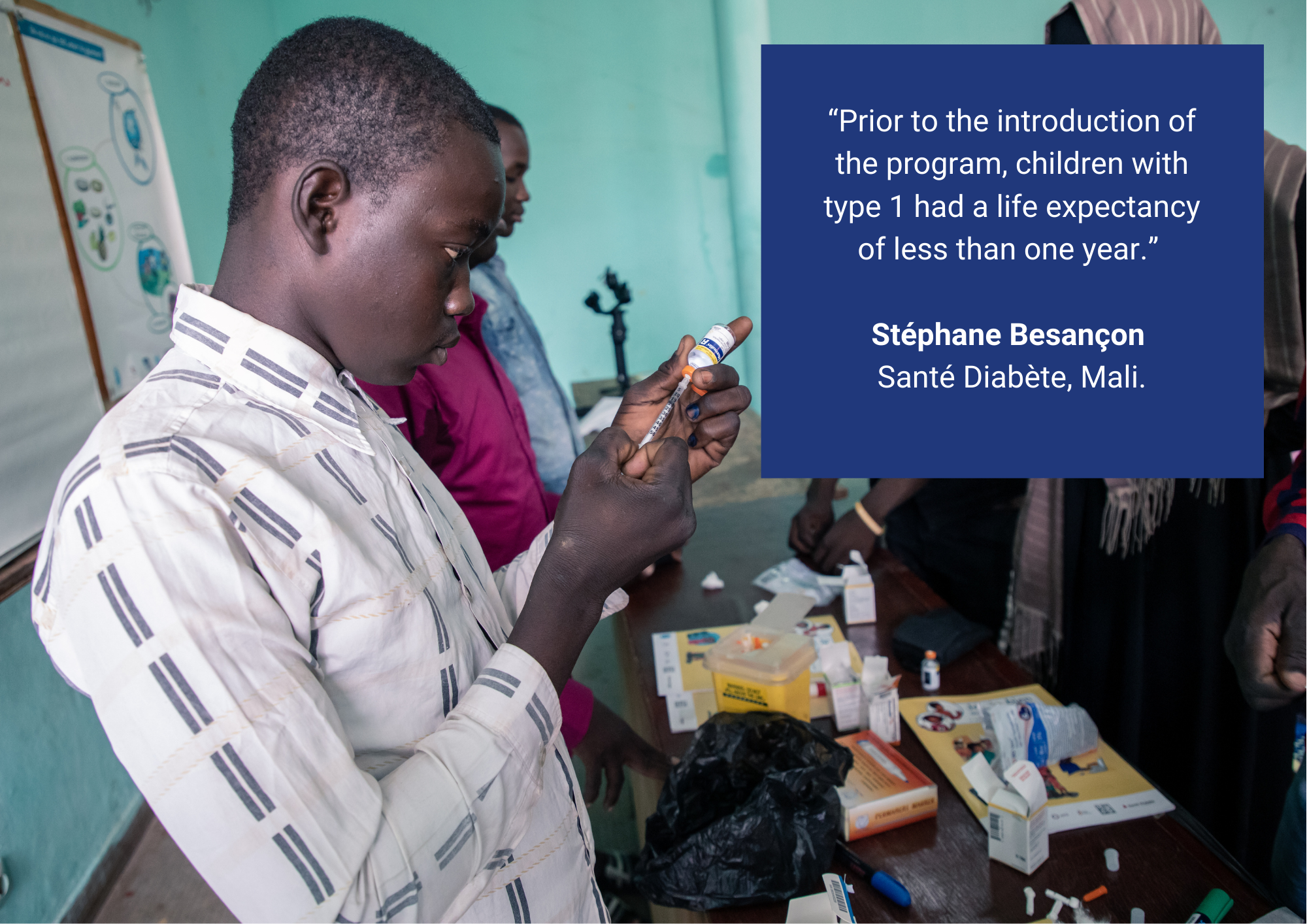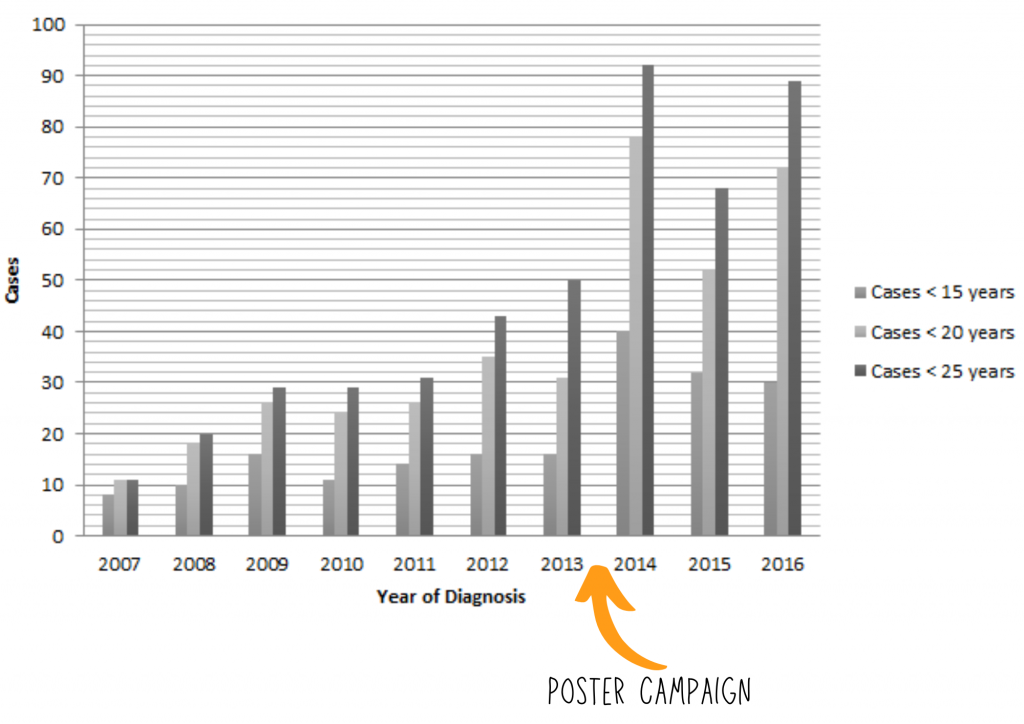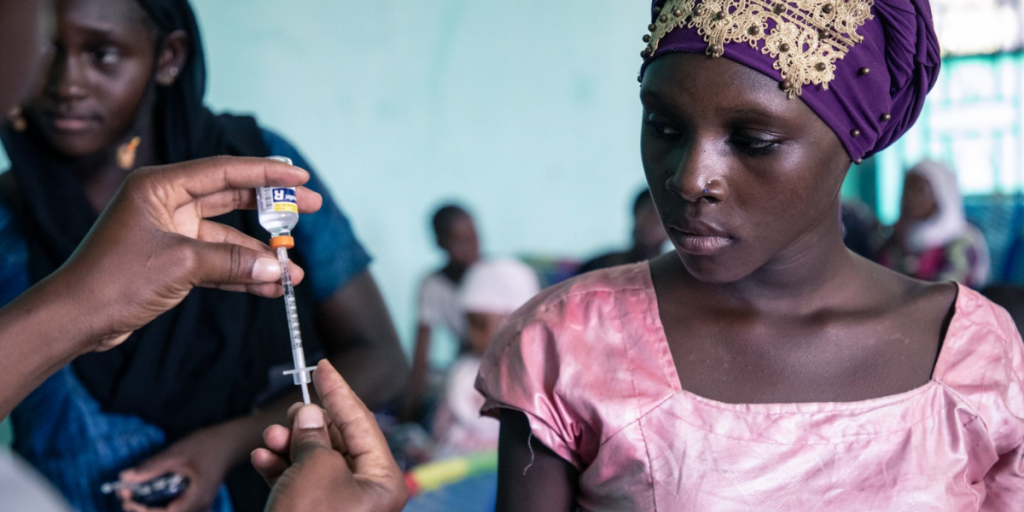A huge increase in the number of children and youth living with type 1 diabetes (T1D) was recorded between 2007 and 2016 in the West African country of Mali.
A new study shows that this increase is likely due to improvements in diagnosis and care, resulting in fewer young people dying from T1D and complications.
Before Life for a Child joined forces with local partner Santé Diabète, in 2007, there were only 28 young people living with T1D in Mali. At this time, very limited care was available, and sadly most young people died within a couple of years of a T1D diagnosis. However, since Life for a Child began supporting Santé Diabète, support has been consistently provided for young people under the age of 26. This care is provided in partnership with the Mali government health services.

We started with the basics; providing young people with the insulin and supplies they needed to manage their T1D. Then in 2013, we ran a poster campaign in health facilities across the country, raising awareness of the symptoms of T1D to prevent deaths from misdiagnosis or late diagnosis of ketoacidosis—these were sadly very common before the intervention took place. A whopping thousand and six hundred posters in French and the local language Bambara were distributed to all diabetes clinics in all regions of Mali and the capital Bamako, as well as patient associations.
The campaign was very successful: More and more children were being diagnosed with T1D and referred to Santé Diabète for supplies and support.
The graph below shows the number of T1D cases between 2007 and 2016. The number of diagnosed cases of T1D rose sharply from low levels in 2007. There was a peak in 2014 – the year after the poster campaign.

Today over 700 young people are supported by Life for a Child and Santé Diabète across Mali. These young people have access to diabetes education materials and can connect with each other at education workshops.
The authors are hopeful that findings from this study will serve as advocacy material to help drive awareness on the impacts that interventions have on improving survival rates in less-resourced settings. Further, we are optimistic that these data will assist local sustainability efforts; the government is doing more and more to help.
This is an important study that shows basic provision of care saves lives. However, there is much more to do. The study explains that the number of young people with type 1 in Mali may still be underestimated, with young people dying undiagnosed. You can help us continue this important work by making a donation to Life for a Child today.
You can see the study here or email us to request a copy at [email protected].

Education session in Bamako
